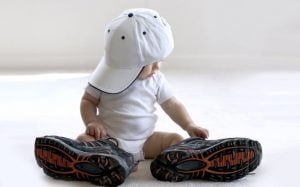
While parents certainly have a GP and a dentist in mind when planning for their child’s healthcare, they may never have thought of adding a podiatrist to their preparations for a healthy adulthood for their little one.
During childhood, the body is still developing and growing, allowing for an opportunity to correct foot and limb problems that may cause discomfort later in life. When should a child see a Resonance Podiatrist?
How to Spot Childhood Foot Problems
Children, especially small ones, may have difficulty in expressing themselves about pain and discomfort. To them, what they are experiencing every day is “normal” even when it isn’t. And since kids get weepy when they’re tired, or just plain cross, it can be all-too-easy to miss signs of real physical discomfort. However, in many instances, parents are the first to spot signs of trouble – if they know what to look for.
You can see some foot problems just by looking. If a child’s feet seem to be an unusual shape, lack an arch, or there’s noticeable asymmetry between left and right feet, that could be a sign of trouble. The toes should also be regular. They shouldn’t cross over or adopt a clawed shape.
Pain is never a good sign. Although kids might not complain about sore feet and lower limbs, a parent might notice that their child is reluctant to engage in physical activity. Chances are, it’s not laziness. Kids love to run and play – but if it’s uncomfortable to do so, they will sit on the side-lines.
Parents may even notice that when they do play, they are more prone to falls than their contemporaries. Again, it’s a sign that something is amiss. A little clumsiness is normal in kids, but regular falls might be the result of something other than poor coordination.
Watch the Walk
The way a child walks also provides clues. Limping should be the exception, not the rule. Parents can also look at wear on the shoes. If their child’s feet tend to roll inward or outward when walking, parents will notice it on their child’s shoes if nowhere else.
Parents can also look at the way their child uses their feet. Small children naturally turn their feet outwards more than adults do when they’ve just learned to walk, but by the time they’re about four years old, their foot alignment when walking should be much like that of an adult’s. Little ones may also adopt a walk with the toes pointing inward or may be inclined to walk on tiptoe, but that should change naturally by the age of three or four.
Anything odd about the way a child walks could be an indicator of a physiological problem. The good news is that we can usually take some form of corrective action that will address it.
When in Doubt, Check it Out
If a parent has any doubts about their child’s feet or the way he or she walks, a podiatrist’s evaluation can help, either to set the parent’s mind at rest, or to address any problems. But even if they don’t have doubts, taking their four-year old child for a check-up can’t hurt.
Sometimes parents just want me to check and see if everything’s alright which I think that’s a wise move. The longer foot problems in children are left untreated, the more difficult it is to correct them. I’ve treated many adults who should probably have seen a podiatrist when they were still children, and it’s a pity that they had to live with foot and lower limb issues for so long.
If you are at all concerned about your child’s feet, call us today.
0800 473 776
(09) 212 9612
